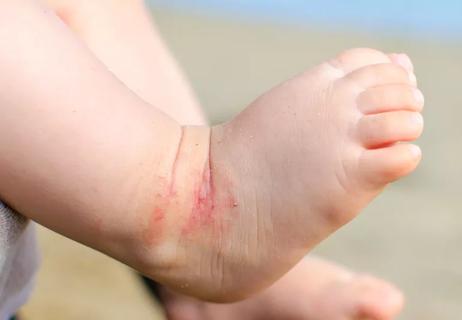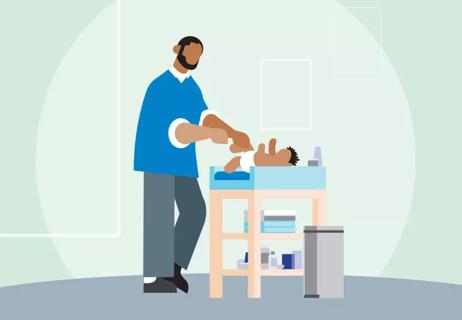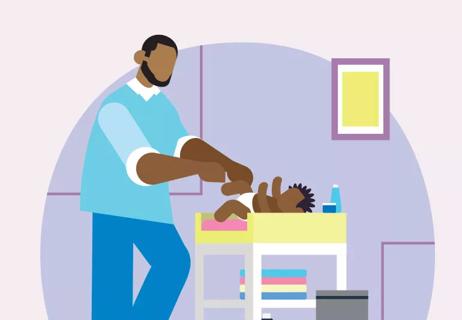Share this list with anyone who cares for your baby

Having a new baby in the house can fill you with joy, excitement and even a little trepidation! So as your parental instincts kick in, you’ll want to make sure you’re doing everything possible to create a safe sleep environment for your new baby — and protect them from sudden infant death syndrome (SIDS).
Advertisement
Cleveland Clinic is a non-profit academic medical center. Advertising on our site helps support our mission. We do not endorse non-Cleveland Clinic products or services. Policy
“Although the number of SIDS deaths is dropping nationally, the numbers remain high in some areas of the United States — so it’s still a risk,” says pediatrician Raj Rambhatla, MD. “And anyone caring for a baby needs to stay vigilant.”
According to the Centers for Disease Control and Prevention (CDC), approximately 3,400 babies die annually from sleep-related causes in the United States. That’s far too many. But it represents a tremendous drop from 25 years ago, when the American Academy of Pediatrics launched its “Back to Sleep” initiative, urging parents to put their babies to sleep on their backs.
In its policy statement, the American Academy of Pediatrics has since added many new evidence-based recommendations to create a safe sleep environment and reduce SIDS. All these recommendations are for babies up to one year of age.
SIDS is the sudden, unexplained death of a healthy baby, usually less than one-year-old, that happens while they’re sleeping.
“While there is no one definitive cause for SIDS, research has shown that this syndrome may be associated with defects in the baby’s brain that control breathing during sleep,” says Dr. Rambhatla.
Other potential risk factors for SIDS include:
Advertisement
There is no foolproof way to prevent SIDS from happening, but there are ways of lowering your baby’s risk. Dr. Rambhatla shares tips, below.
Until their first birthday, always put your baby to sleep on their back on a firm mattress — during naps and at night. This position makes it easier for them to breathe.
“We know that babies who sleep on their backs are much less likely to die of SIDS than babies who sleep on their stomachs or sides,” says Dr. Rambhatla.
Once babies can turn over unassisted (typically around 6 months), it’s OK to let them sleep on their sides or tummies — if they move into that position on their own.
Make sure your baby has tummy time for a few minutes every day, after about one month of age, when they’re awake, to help promote their motor development and prevent flat head syndrome.
Use a firm sleep surface. “We recommend a crib, bassinet, portable crib or play yard that meets Consumer Product Safety Commission (CPSC) standards — along with a tight-fitting, firm mattress, and a fitted sheet designed for that product,” says Dr. Rambhatla.
Avoid putting anything in the crib or bassinet except your baby. Don’t use loose blankets or sheets. Soft objects (like stuffed toys, pillows, bumpers or cushions) are also a no-no in your baby’s bed.
If the room is chilly, give your baby a wearable blanket (often called a sleep sack).
Share a room with your baby for the first six months or, ideally, their first year. Set your baby’s bed up in the room where you sleep, but keep your sleeping spaces separate. It’s tempting to keep your little one in bed with you at night — but resist the temptation.
“Many parents think it’s OK to bed-share. They think, ‘I’ll stay awake,’ or ‘I don’t sleep that deeply’,” Dr. Rambhatla notes. “But a baby and the parents should never sleep in the same bed.”
Also, avoid using your baby’s car seat, stroller, swing or infant carrier as a regular sleep spot. The sitting sleep position can block your little one’s airway.
Advertisement
Don’t let your baby fall asleep on the nursing pillows or pillows like lounging pads, couch or armchair, either. And it’s OK to swaddle your baby, but not too hard or tight, and always lay them on their back.
If you can, breastfeed your baby for at least six months to a year. Research now shows that breastfeeding can reduce SIDS risk by up to 50%.
Try breastfeeding exclusively, but if you need to introduce formula, no worries. Not all people are able to breastfeed.
Try to avoid smoking during pregnancy and in your home after your baby’s birth. Smoking in the home increases SIDS risk.
According to the CDC, many babies who die from SIDS have higher levels of nicotine in their lungs — as well as cotinine, a biological marker indicating exposure to secondhand smoke.
Don’t use alcohol or other illicit drugs during pregnancy or after the baby is born, either. They increase the risk of premature birth and other birth defects.
Yes, you need to keep your little one warm, but not too warm. A good rule of thumb is to dress your baby in one layer more than you’re wearing.
“If babies are sweating, or if their chests are hot to the touch, they’re overdressed,” says Dr. Rambhatla.
Using a pacifier seems to offer some protection from SIDS. But you don’t have to force your baby to use one. And it’s OK if it falls out during sleep.
Advertisement
If your baby was a preemie, the risk of SIDS is three times higher, so it’s even more critical to follow these tips, Dr. Rambhatla says.
“These recommendations are most important during the first year of life,” she says. “All parents should pay close attention to them, to reduce the risk of SIDS.”
Advertisement
Learn more about our editorial process.
Advertisement

Moisturizer, a daily bath and some gentle nudging can help

Keeping their skin moisturized — and scratching at bay — is half the battle

These simple steps can soothe your baby’s blotchy bottom

Tips for getting to the bottom of the problem

The emergency room is for serious medical issues; urgent care can help when you can’t get a quick appointment with your child’s doctor

Gripe water isn’t regulated by the FDA, and research doesn’t support its use

It’s not just about people you don’t know — it’s about behaviors that don’t feel right.

Jaundice that’s present at birth or lasts more than a week should be evaluated by a pediatrician

Leg-related symptoms indicate DVT, while chest symptoms point to a pulmonary embolism

There are many different ways to love someone and yourself

Looking down at your smartphone or computer screen can stress muscles in your neck, shoulders and back